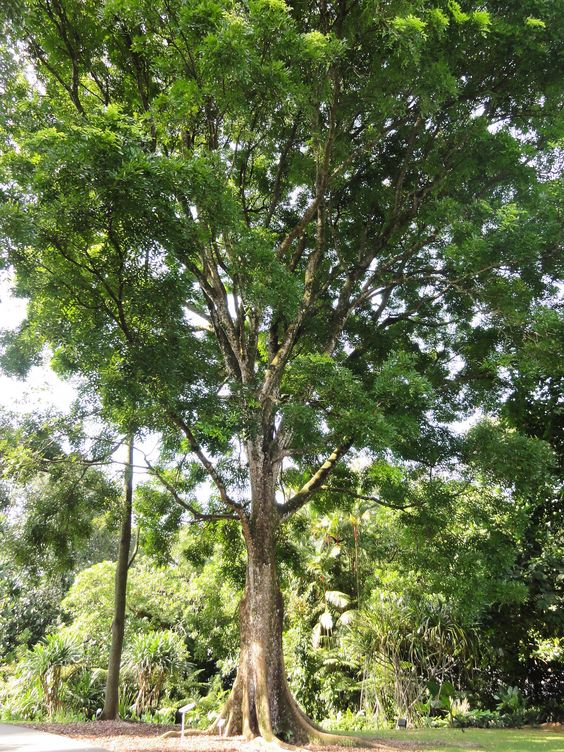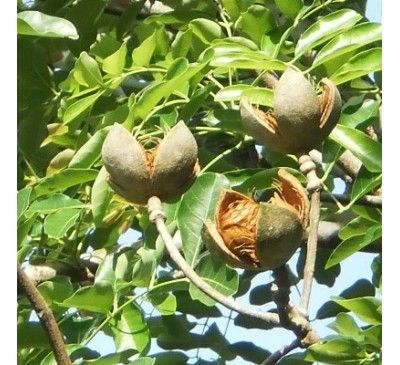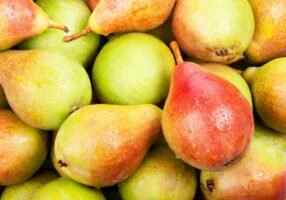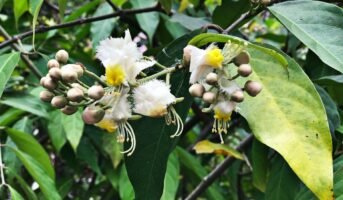Khaya senegalensis, commonly known as Senegal mahogany, is a hardy tree indigenous to the Cape Province of South Africa. It grows up to 20 metres in height and has a very long lifespan. It is used for its medicinal properties and is used for treating diabetes mellitus, cancer, and tuberculosis. This species is commonly grown as an ornamental tree in gardens, parks, and public spaces.
Khaya senegalensis is a tropical tree that belongs to the family of Meliaceae. It is used for treating many diseases, such as arthritis, fever, cough and stomach disorders. The fruits are round in shape and brownish-black in colour, and they contain seeds which are winged and brownish-black in colour. Khaya senegalensis can be grown in temperate zones as well as semi-arid regions with rainfall ranging from 500-1000 mm (18-40 inches) annually.
Its natural population has dwindled as a result of excessive logging. As a result, the species has been listed as vulnerable on the Red List of Threatened Species of the International Union for Conservation of Nature (IUCN).

Source: Pinterest
See also: Jade plants benefits and how to take care of themax
Khaya senegalensis: Quick facts
| Botanical Name | Khaya senegalensis |
|---|---|
| Common Name | Senegal mahogany |
| Genus | Khaya |
| Clade | Tracheophytes |
| Order | Sapindales |
| Family | Meliaceae |
| Mature Size | Upto 20 m tall |
| Cultivation | African countries |
| Benefits | It has anti-malarial and antibacterial properties |
Khaya senegalensis: Physical description

Source: Pinterest
Khaya senegalensis is a type of tree native to southern Africa. The plant grows up to 20 m in height and has a thick, spreading canopy that can provide shade for a large area. Its leaves are shiny green on the upper side, with white spots on the underside of each leaf.
The fruit of Khaya senegalensis is spherical and yellow when ripe, with golden flesh inside. It contains numerous small seeds that must be washed before consumption to remove any pests. These seeds can also be eaten raw. However, they should not be eaten without washing first because they are high in fat content and can cause stomach aches if consumed improperly.
Khaya senegalensis: How to grow
Propogation
- To propagate Khaya senegalensis cuttings, you’ll need a sharp pair of pruning scissors and a sharp knife.
- To prepare your cutting, use a sharp knife to make 3-4″ cuts about 1/4″ deep for every leaf node (where leaves grow).
- You should make the cuts at least 2 weeks before you intend to plant your cutting so they have time to heal before being planted outside.
- When planting your cutting outdoors in the summertime, make sure it receives lots of sunlight during warm weather periods. It will quickly grow into a new plant instead of withering away like it might do if left unattended in cold weather conditions.
- To grow Khaya senegalensis, you’ll need to give your plant plenty of light and water.
- The plant requires six hours or more of direct sunlight daily.
- If your plant loses its leaves during the winter months, remove them from the container and place them in a cool room with indirect light until they sprout again.
From seeds
- The seeds can be germinated in water or soil, but they do not require much water once they are planted.
- Plant them 6-8 inches apart and keep them moist until they grow roots.
- You can also plant them in pots before transplanting them into their permanent location, but if you do this, make sure the pot has drainage holes to prevent overflow.
- If you choose to transplant it into its permanent location, then make sure the root ball is small enough for it to fit through a door or window frame without being squished against the wall.
Khaya senegalensis: Maintenance tips
Khaya senegalensis is a tropical tree that can be grown indoors in containers. The tree is considered to be an invasive species in some locations but can be used for hedging or landscaping purposes. It can be propagated by seed or cuttings from mature trees, depending on your location and climate conditions.
This plant grows best in warm, humid climates. It needs hot summers and warm winters to grow well, so it’s not an option for colder climates. If you live in a cold area, you may want to consider growing your own trees indoors or in containers.
Khaya senegalensis is hardy and easy to grow. Just give it water when it needs it and make sure that its soil is well-drained. You can even use this tree as a houseplant if you don’t want your yard full of plants.
Khaya senegalensis: Uses
Khaya senegalensis is a plant with a long history of use in Ayurvedic medicine. The species’ name refers to its origin in the Senegal River basin, which is also known as the garden of Africa.
Khaya senegalensis was used as an antimalarial drug during the 19th century and continues to be used today by practitioners of traditional Chinese medicine. It has also been used as an anti-inflammatory and anti-ulcerative agent for centuries.
FAQs
What are the health benefits of Khaya senegalensis?
Medicinal uses of this plant include treating toothaches, dental caries, septic mouth, diarrhoea, dysentery, and malaria.
What is the commercial benefit of Khaya senegalensis?
The wood of African mahogany is used to make furniture and other wooden items.
Housing News Desk is the news desk of leading online real estate portal, Housing.com. Housing News Desk focuses on a variety of topics such as real estate laws, taxes, current news, property trends, home loans, rentals, décor, green homes, home improvement, etc. The main objective of the news desk, is to cover the real estate sector from the perspective of providing information that is useful to the end-user.
Facebook: https://www.facebook.com/housing.com/
Twitter: https://twitter.com/Housing
Email: [email protected]











